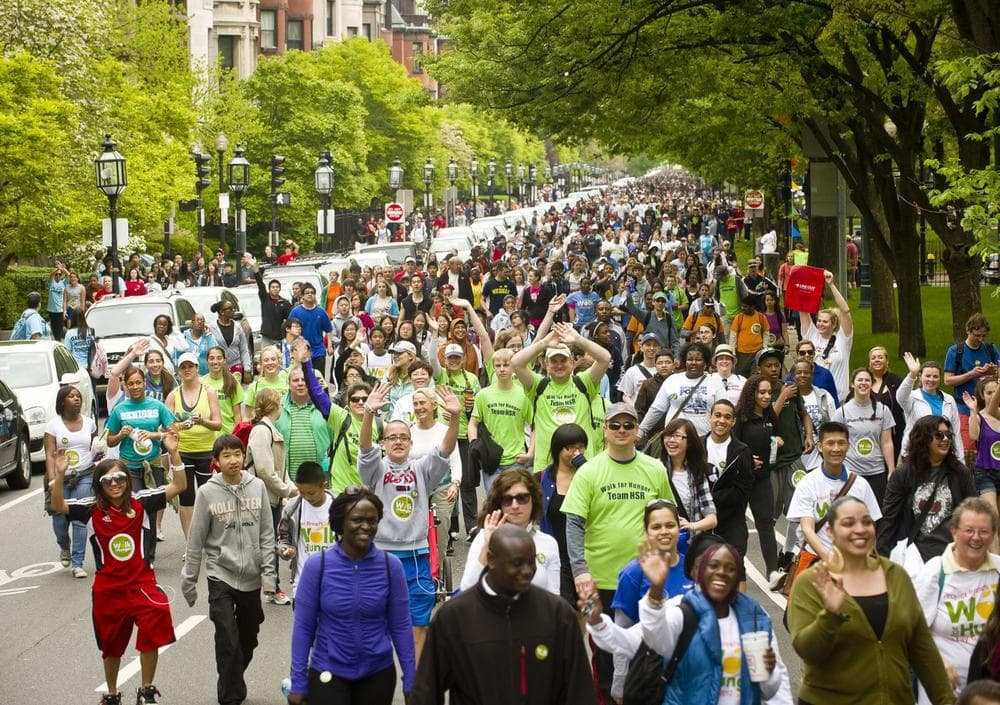Advertisement
interview
Meet The Man Who Revolutionized Charity Walk-A-Thons
Resume
On November 2, Steve Biondolillo will be inducted into the National Wrestling Hall of Fame, Massachusetts Chapter. In the 1980s, Biondolillo competed for a spot on the Canadian Olympic Team in freestyle wrestling, and he medaled in the World Maccabiah Games in Israel. He later coached collegiate wrestling.
But Biondolillo isn't being inducted into the Hall of Fame for his contributions to the sport. He's being honored as an "Outstanding American," and that got our attention here at Only A Game. Steve Biondolillo joined Bill Littlefield to talk the evolution of charity "a-thons."
Highlights from Bill's Conversation with Steve Biondolillo.
BL: When you first got involved in pledge based fundraising, better known as walk-a-thons, bike-a-thons, swim-a-thons, and everything else-a-thons, those events were raising approximately $20 million a year. Now, they raise somewhere in the neighborhood of $2 billion. So does that mean I have to blame you for every time a neighbor or co-worker has asked me to pledge something?
SB: Absolutely, Bill. We're the guy. You can give [Biondolillo Associates] the credit or the blame for popularizing that form of fundraising in the United States. We didn't create the walk-a-thons and bike-a-thons, but we did bring them to scale by doing the world's first $1-million walk, $2-million walk, $3-million walk, $8-[million], $9-[million] and so forth, and thereby starting the mania [of] "Let's do one."
BL: What accounts for the growth that you are talking about, not only in the Walk for Hunger, but in other "a-thons" as well?
SB: The genesis of walk-a-thons was political protest marching in the 1960s. And so that's a Baby Boomer way of expressing themselves in terms of making a difference in the society, and they took to the streets. Then in 1970 the March of Dimes started and was the first charity to use that kind of fundraiser systematically.
You could characterize the movement unfolding in three eras. First was the walk-a-thon era. Then I'd say that's the '70s and '80s. In the '90s you go to bike-a-thons. And in the bike-a-thons you have people needing to train a little bit now to do those long-distance bike events. And you start to see the minimum prices creep up. And in the last 10 years, you see the advent of the "extreme-a-thon." The whole movement morphs from initially just being cause focused to then also a little bit fitness focused, too.
BL: More recently you've become involved in ClimbCorps, which raises money and awareness for heart disease. And it's no coincidence, I suppose, that you're fighting heart disease with an activity that can help reduce a participant's risk of a heart attack.
SB: Absolutely, you know as I said, sort of this third era of pledge-fundraiser-a-thons is the "extreme-a-thon." And so one of the two main forms of the extreme, in addition to the obstacle course format, is climbing. And if you think about it, if we could repurpose every stairwell in America in a large office building into a fitness venue, my goodness, how could we improve the health of the American public?
We mean business, and in Boston right now there are a dozen major buildings that have provided contracts to open their stairwells. And this group ClimbCorps, which was a program created by our firm for Brigham and Women's Hospital, has recent college grads deployed around Boston, and I believe over 3,000 members of the work force participating in ClimbClubs. And then [it's] all geared towards participating in the great ClimbAmerica event in January and June. It gives them something to work for.
This segment aired on October 26, 2013.